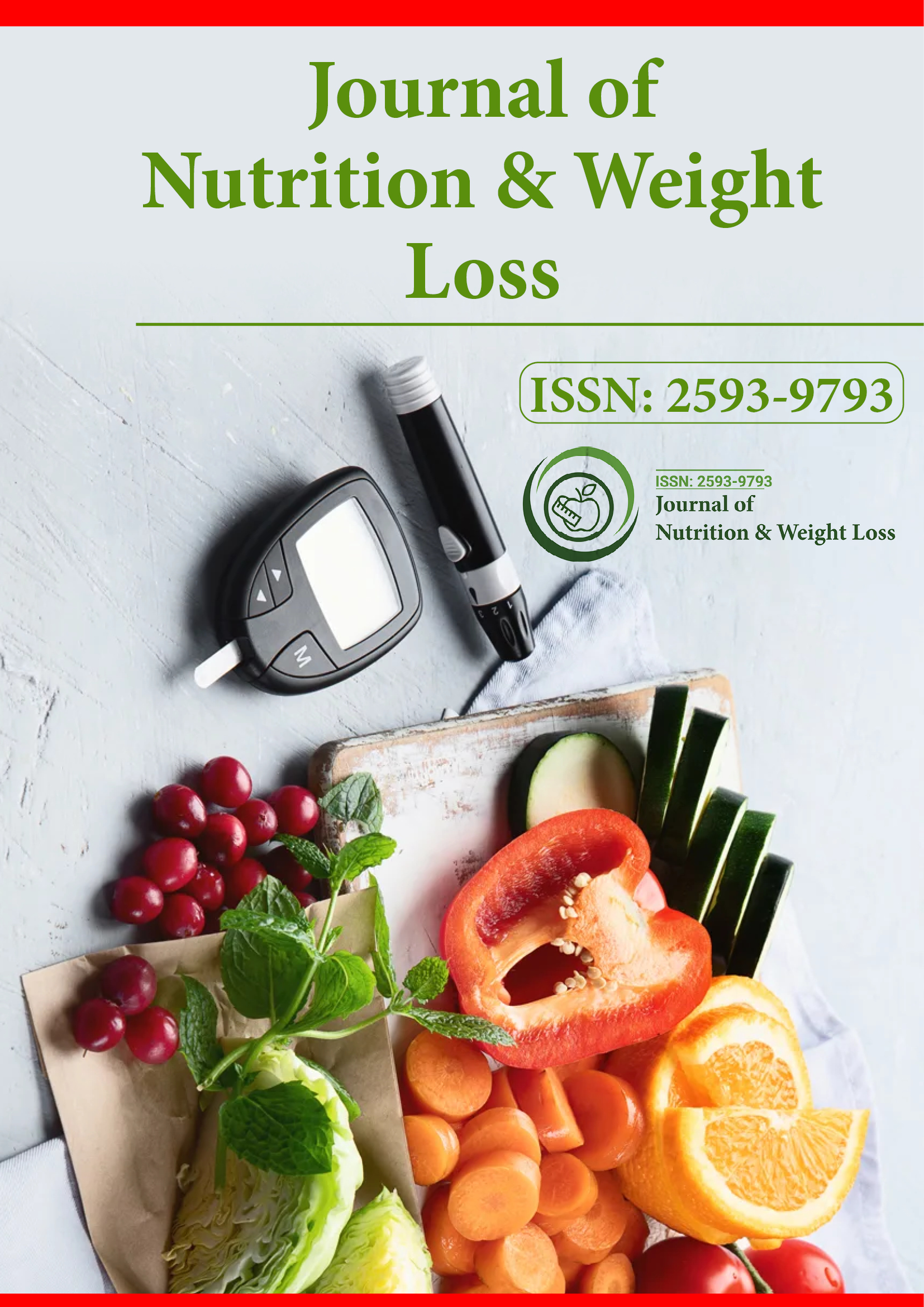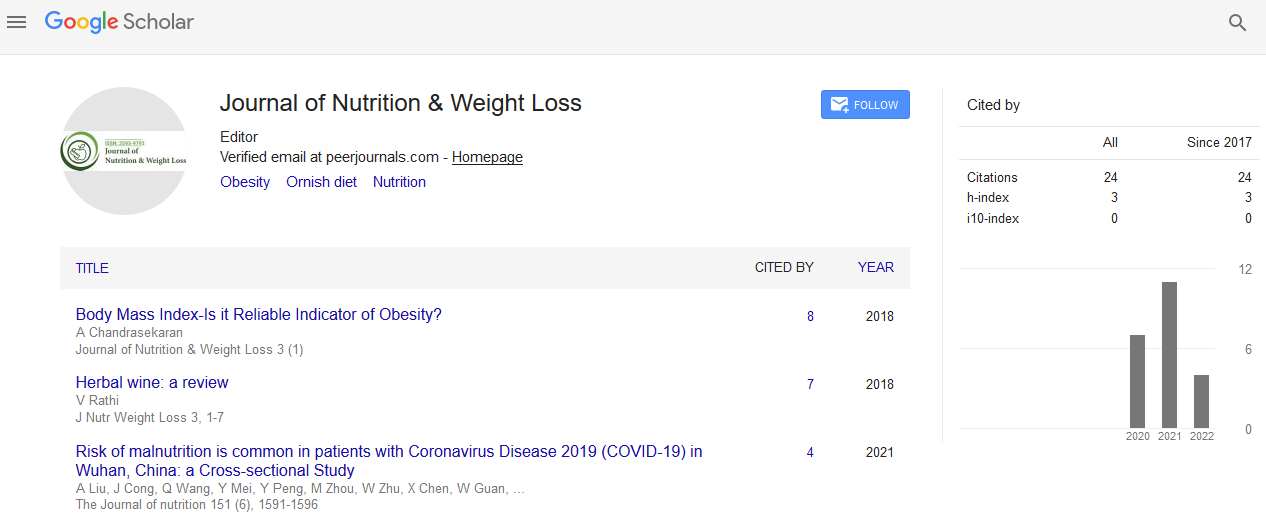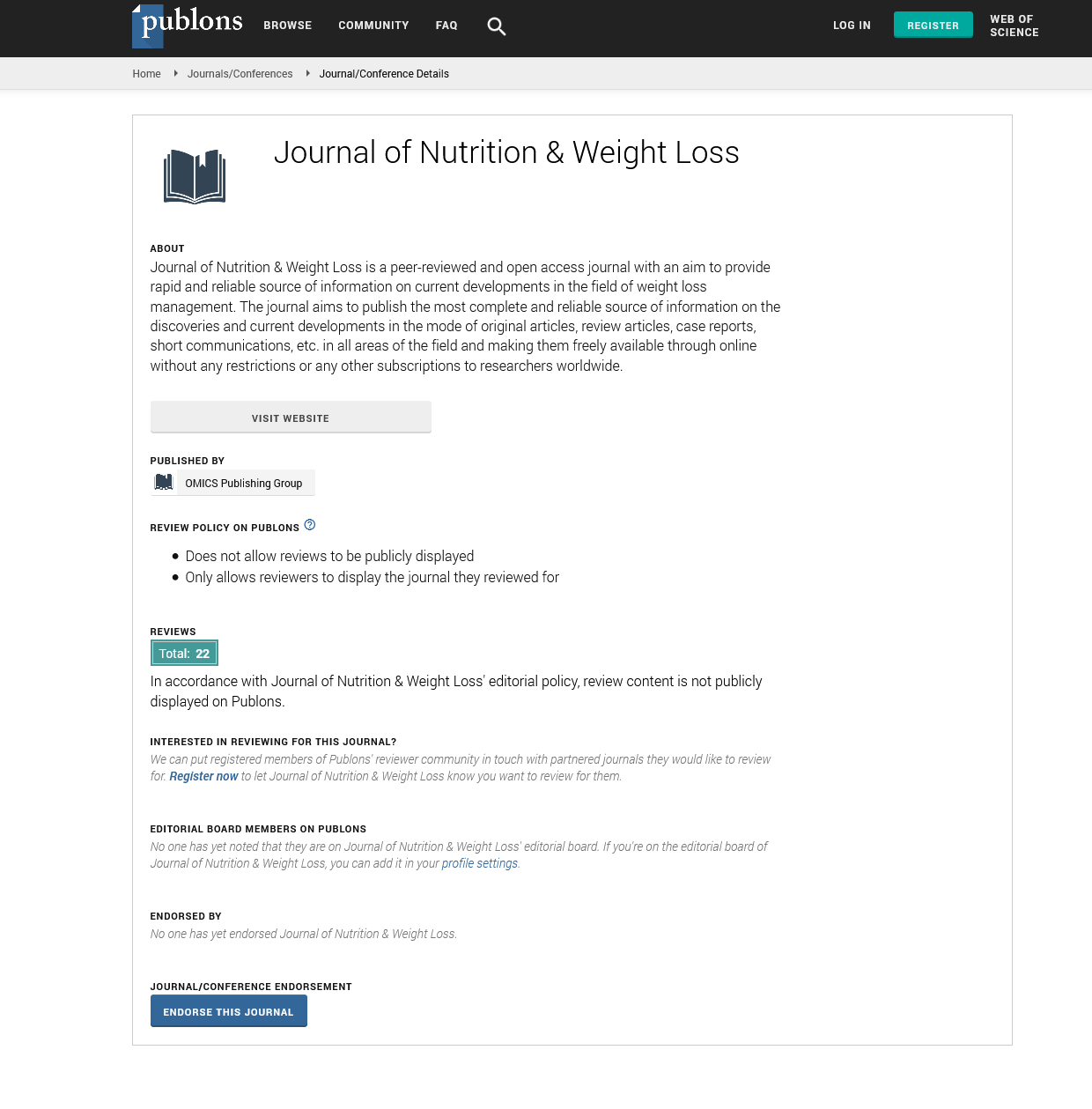Indexed In
- RefSeek
- Hamdard University
- EBSCO A-Z
- Publons
- Euro Pub
- Google Scholar
Useful Links
Share This Page
Journal Flyer

Open Access Journals
- Agri and Aquaculture
- Biochemistry
- Bioinformatics & Systems Biology
- Business & Management
- Chemistry
- Clinical Sciences
- Engineering
- Food & Nutrition
- General Science
- Genetics & Molecular Biology
- Immunology & Microbiology
- Medical Sciences
- Neuroscience & Psychology
- Nursing & Health Care
- Pharmaceutical Sciences
Opinion Article - (2025) Volume 10, Issue 2
Nutritional Approaches to Weight Loss in Aging Populations
Maria Gonzalez*Received: 30-May-2025, Manuscript No. JNWL-25-29884; Editor assigned: 02-Jun-2025, Pre QC No. JNWL-25-29884 (PQ); Reviewed: 16-Jun-2025, QC No. JNWL-25-29884; Revised: 23-Jun-2025, Manuscript No. JNWL-25-29884 (R); Published: 30-Jun-2025, DOI: 10.35248/2593-9793.25.10.236
Description
Aging introduces unique challenges in the pursuit of weight loss and weight management. While younger individuals often focus on appearance and energy, older adults must contend with shifting metabolic rates, changes in body composition, and the growing prevalence of chronic diseases. Nutritional approaches to weight loss in aging populations must therefore balance the goal of reducing excess fat with the preservation of lean muscle and bone health. This dual objective requires careful planning and consideration of the physiological, psychological, and social factors that accompany aging.
One of the most striking changes associated with aging is the decline in basal metabolic rate. This reduction is largely attributed to the loss of lean muscle mass, which begins in middle age and accelerates after the age of 60. Since muscle tissue burns more calories at rest than fat tissue, its loss contributes to energy imbalances that promote fat accumulation. Older adults seeking weight loss must therefore prioritize dietary strategies that preserve or even increase muscle mass. Adequate protein intake, spread evenly across meals, supports muscle synthesis and helps counteract sarcopenia. Studies suggest that older adults benefit from protein intakes higher than the general recommendation, with 1.2 to 1.5 grams per kilogram of body weight often cited as optimal for maintaining muscle during caloric restriction.
Micronutrient needs also change with age, further complicating weight loss efforts. Vitamin D and calcium become critical for bone health, as osteoporosis risk increases. B vitamins, particularly B12, are important due to declining absorption efficiency in older adults. Iron, zinc, and magnesium also require attention, as deficiencies can impair energy metabolism and overall well-being. Weight loss plans for aging individuals must integrate nutrient-dense foods that meet these needs while controlling caloric intake.
Appetite regulation undergoes shifts with aging, often leading to reduced hunger signals. This phenomenon, sometimes referred to as the "anorexia of aging," may complicate the ability to consume adequate protein and micronutrients. Conversely, some older adults experience increased cravings for sweet or salty foods, often driven by changes in taste and smell perception. Addressing these variations requires individualized dietary counseling and strategies to enhance the palatability of nutrient-rich foods. For example, incorporating herbs and spices can improve flavor without relying on excessive salt or sugar.
Physical activity, though not strictly nutritional, interacts closely with diet in supporting weight management among older adults. Resistance training plays a pivotal role in preserving muscle mass, while aerobic activity supports cardiovascular health and energy expenditure. Combining these activities with appropriate nutrition creates a synergistic effect that enhances both weight control and functional independence. Nutritional timing—such as consuming protein-rich meals after exercise—further supports muscle preservation and recovery.
Weight loss in older adults also intersects with the management of chronic diseases such as type 2 diabetes, cardiovascular disease, and arthritis. Excess weight exacerbates these conditions, yet overly aggressive weight loss may increase frailty and vulnerability. A moderate approach, aiming for gradual weight reduction of 5%-10% of body weight, is generally considered safe and effective. Such reductions improve insulin sensitivity, blood pressure, and lipid profiles without compromising muscle and bone integrity.
Psychological and social factors play significant roles in dietary adherence among older adults. Loneliness, depression, or lack of social support may undermine motivation to follow healthy eating patterns. Conversely, group programs, community centers, and family involvement can foster accountability and enjoyment in dietary changes. Cooking classes, nutrition workshops, and shared meals enhance not only dietary quality but also social engagement, which is crucial for mental well-being.
Food accessibility also impacts older populations. Limited mobility, fixed incomes, and geographical barriers may restrict access to fresh produce and lean proteins. Policy initiatives that support affordable, accessible, and senior-friendly food environments are therefore essential. Home-delivered meal programs that emphasize balanced nutrition provide one effective solution, especially for those living alone or with functional limitations.
Emerging research on gut microbiota highlights its relevance in aging and weight management. Dysbiosis, or microbial imbalance, has been linked to both obesity and age-related inflammation. Probiotic and prebiotic interventions may help restore microbial diversity and improve metabolic outcomes, though more studies are needed in elderly populations. Including fermented foods such as yogurt, kefir, and sauerkraut can provide natural sources of beneficial microbes.
In conclusion, nutritional approaches to weight loss in aging populations must prioritize not only fat reduction but also the preservation of muscle, bone, and overall vitality. Adequate protein, micronutrient-rich foods, and balanced caloric restriction form the foundation of effective strategies. Coupled with resistance training, social support, and individualized adjustments, these approaches enable older adults to manage weight while maintaining functional independence and quality of life.
Citation: Gonzalez M (2025). Nutritional Approaches to Weight Loss in Aging Populations. J Nutr Weight Loss. 10:236.
Copyright: © 2025 Gonzalez M. This is an open access article distributed under the terms of the Creative Commons Attribution License, which permits unrestricted use, distribution, and reproduction in any medium, provided the original author and source are credited.


